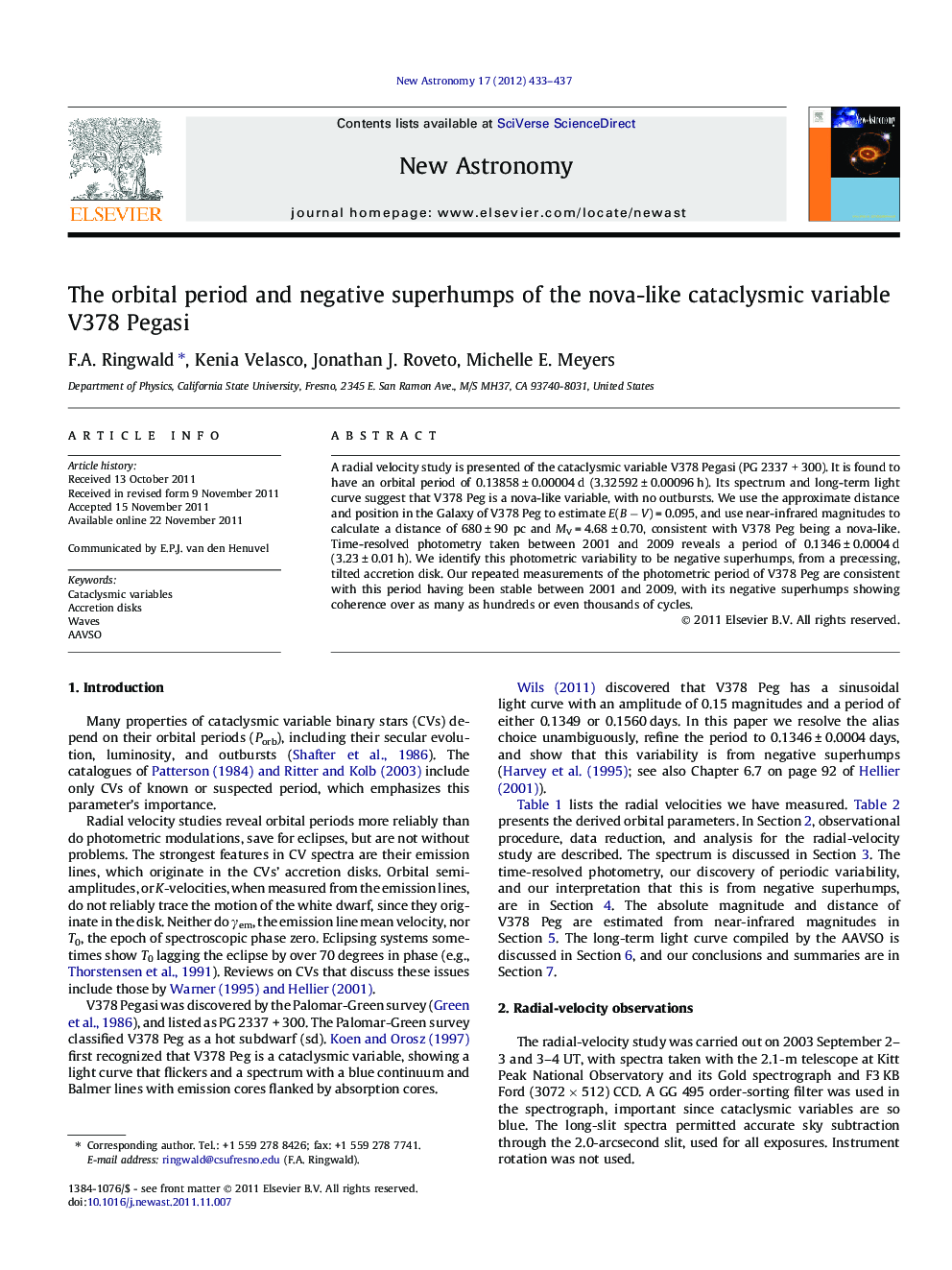| Article ID | Journal | Published Year | Pages | File Type |
|---|---|---|---|---|
| 1779287 | New Astronomy | 2012 | 5 Pages |
A radial velocity study is presented of the cataclysmic variable V378 Pegasi (PG 2337 + 300). It is found to have an orbital period of 0.13858 ± 0.00004 d (3.32592 ± 0.00096 h). Its spectrum and long-term light curve suggest that V378 Peg is a nova-like variable, with no outbursts. We use the approximate distance and position in the Galaxy of V378 Peg to estimate E(B − V) = 0.095, and use near-infrared magnitudes to calculate a distance of 680 ± 90 pc and MV = 4.68 ± 0.70, consistent with V378 Peg being a nova-like. Time-resolved photometry taken between 2001 and 2009 reveals a period of 0.1346 ± 0.0004 d (3.23 ± 0.01 h). We identify this photometric variability to be negative superhumps, from a precessing, tilted accretion disk. Our repeated measurements of the photometric period of V378 Peg are consistent with this period having been stable between 2001 and 2009, with its negative superhumps showing coherence over as many as hundreds or even thousands of cycles.
► We show that the cataclysmic variable V378 Pegasi has an orbital period of 0.13858 d. ► Its spectrum and long-term light curve show it is a nova-like variable. ► We estimate a distance of 680 ± 90 pc and MV = 4.68 ± 0.70. ► Time-resolved photometry taken between 2001 and 2009 reveals a period of 0.1346 d. ► We identify this photometric variability to be negative superhumps.
